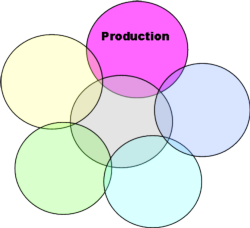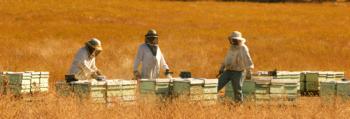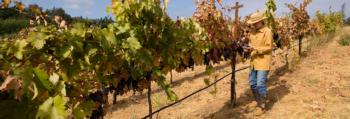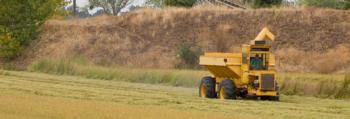Production Risk
What Is Production Risk?

Anything that directly affects the quantity and quality of your production or causes variation in expected yield. If you've been farming for even a little while, you are probably well-versed with production risk.
Jump directly to resources.
Some Sources of Production Risk
- Weather and wildfire
- Pests and disease
- Production management - planting, harvesting, food safety
- Infrastructure (on-farm and off-farm) malfunction

Some Questions to Ask to Assess Your Production Risk
General:
- Which of the listed risks affects me by keeping me from getting to my goals?
- Which can I manage on my own?
- Which do I need help managing?
- Which can I avoid?
Production Management:
- How much benefit might I get from using protected cultivation?
- Would changing my pest management practices reduce crop losses?
- How can I minimize food safety issues in my production, harvest and post-harvest handling practices?
- How can I bring down production costs?
Diversification:
- Will a new enterprise offer effective diversification?
- What knowledge and management skills do I need for an extra enterprise?
- Which extra capital investments and labor would I need to diversify?
- Do I have a serious commitment to a new enterprise?
Crop Insurance:
- What are my major sources of production risk?
- What type of insurance coverage do I need for protection?
- What coverage is available to me?
- How much coverage do I need for adequate cash flow?
New Technology Adoption:
- Does adopting a new technology reduce my risk?
- What is the economic benefit of adopting new technology?

Source: USDA Risk Management Agency. "Introduction to Risk Management: Understanding Agricultural Risks." Revised December 1997

Tools for Mitigating and Planning for Production Risk
- Diversify crops or enterprise
- Change production methods
- Use lease arrangements with crop or livestock shares
- Invest in new technologies
- Maintain farm infrastructure and equipment
- Use protected cultivation
- Stay informed
- Site selection
- Get crop insurance
- Develop a contingency plan
Remember: It's important to choose the tools that are best for you, your level of risk tolerance, and your operation.

Resources
General:
Risk Management Checklist - USDA Risk Management Agency
Crop Insurance Information:
(Note: More information on appropriate crop insurance policies for Placer and Nevada counties coming soon)
- RMA Field Office, Davis - Contact the RMA Field Office in Davis for more information on relevant crop insurance: 530-792-5870 or rsoca@rma.usda.gov
- Disaster Assistance Programs - Farm Services Agency
- Building a Safety Net with Crop Insurance - Cornell. Article gives examples for why crop insurance can be a useful tool in your risk management tool kit.
Production and Pest Management:
- Internet Resources on Costs of Production (OSA 90C) - UCCE Placer/Nevada
- Vegetable IPM Resources - UCCE Placer/Nevada
- Avoiding Cold Damage to Citrus (OSA 15C) - UCCE Placer/Nevada
- Greenhouse and High Tunnel Resources (OSA 120C) - UCCE Placer/Nevada
Diversification:
- Key Points to Consider for Various Alternative Enterprises - University of Florida IFAS. Details the capital and logistical considerations (such as land, knowledge, and skills required) to account for when considering an alternative enterprise.
- On-Farm Enterprises and Value-Added Products - USDA AFSIC.. Website compiling information on enterprise diversification resources.
Food Safety Information:
- Compost and Manure Food Safety (OSA 79C) - UCCE Placer/Nevada
- Post-Harvest Handling, Direct Marketing, and Quality Control - UC Davis Small Farm Center. Harvesting, packaging, and post-harvest procedures for maintaining food safety and quality.
- Food Safety Webinars - Vermont New Farmer Project. Includes "Practical Food Safety for Produce Farms" and "Managing Food Safety Risks in Agritourism," both from 2011.


